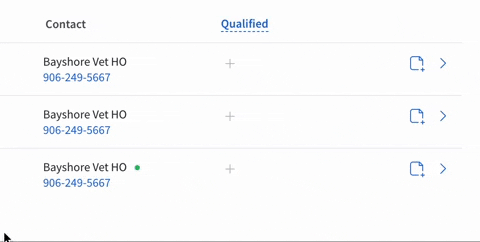Dental marketing is critical to successful practice and consistently generating new patients. In today's digital age, staying ahead of the curve with online presence, engaging content, and solid marketing strategies is essential. By investing time and effort into marketing, you can ensure the growth and longevity of your practice.
There are various approaches to dental marketing, such as pay-per-click advertising, social media marketing, and email campaigns, among others. It's crucial to identify the most suitable course for your practice, depending on your target audience and personal preferences. As you explore different methods, you'll develop a more comprehensive understanding of what works best for your specific goals and needs.
Incorporating diverse strategies into your dental marketing plan can help you establish and maintain a strong online presence, engage with patients, and attract new leads. It's essential to stay up-to-date with marketing trends, understand your audience, and create quality content that resonates with your potential patients. Doing so will set your dental practice apart from the competition and confidently move forward in carving your niche within the dental industry.
Understanding your patient base
Identifying target demographics: Families, professionals, elderly patients
To create an effective dental marketing strategy, it's crucial to identify your target demographics. By focusing on families, professionals, and elderly patients, you can develop a tailored approach that resonates with each group. For families, consider offering child-friendly amenities like a kids' play area or entertaining dental education materials. Professionals may appreciate flexible appointment hours and online scheduling options that accommodate their busy schedules. Elderly patients, on the other hand, might prioritize accessibility features and senior discounts.
Tailoring marketing messages to address the needs of different patient groups
Once you've identified your target demographics, it's essential to tailor your marketing messages to address the specific needs of each patient group. For example, you could emphasize the importance of pediatric dentistry for families, your practice's convenient hours, and online scheduling options for professionals, and emphasize gentle and compassionate dental care for elderly patients.
Here are some ideas for tailoring marketing messages:
- Families: "Start Your Child's Dental Journey with a Caring Team - We focus on creating a fun and educational environment for kids."
- Professionals: "Your Time Matters: Schedule Your Next Dental Visit Online - We offer flexible appointment hours and convenient online scheduling to fit your busy life."
- Elderly Patients: "Gentle Dental Care, Tailored for Your Comfort - Our team is committed to providing you with a comfortable and personalized dental experience."
By understanding your patient base and tailoring your marketing messages, you can effectively attract new patients and grow your practice. Remember to use clear, concise language and avoid jargon to ensure your message is accessible to everyone in your target audience.
Leveraging digital marketing
Importance of a user-friendly, informative website
Your dental practice requires a user-friendly, well-designed website that informs potential patients about your services. It should be easy to navigate, visually appealing, and provide relevant information. Ensure the site is mobile-responsive, as many users access websites through mobile devices.
Key elements of a high-quality dental website include:
- Clear descriptions of dental services offered
- Pop-up menus for easy navigation
- Embedded multimedia content (videos or photos) to showcase your work
- Contact information and appointment booking options
Utilizing SEO strategies tailored for dental practices
To improve the online visibility of your dental practice, focus on Search Engine Optimization (SEO). This involves incorporating relevant keywords and phrases throughout your website, making it more likely to appear in search engine results.
Some essential SEO strategies for dental practices include:
- Perform keyword research to determine popular search terms relevant to your services
- Optimize site content, including meta titles, descriptions, and headings, with keywords
- Create engaging, informative blog posts related to dental topics
- Acquire high-quality, relevant backlinks from industry websites and directories
Effective use of social media to engage with patients and showcase services
Social media platforms like Facebook, Instagram, and Twitter can be powerful tools for expanding your dental practice's online presence. Creating and maintaining a strong social media presence allows you to engage with current and potential patients, share special promotions, and showcase your services.
Here are a few best practices for dental social media marketing:
- Publish visually striking content: before-and-after images, educational graphics, or event photos
- Share helpful dental tips and information, positioning your practice as a trusted source
- Promptly respond to messages and comments, fostering relationships with patients
- Consider using paid advertising options, such as click-to-call ads, on Facebook and Google Ads for increased exposure
How CallRail helps dentists increase their patient base
Call Tracking
CallRail's call tracking can significantly improve your dental practice. You can identify which campaigns drive the most phone calls to your practice by assigning unique tracking numbers for different marketing channels. You will gain insights into your patients' behavior and preferences, which allow you to optimize your marketing strategy and increase incoming leads.

Premium Conversation Intelligence
Offering advanced AI technology, Premium Conversation Intelligence from CallRail helps analyze your phone calls more in-depth. By transcribing and categorizing conversations, you can identify:
- New vs. existing patients
- Appointment scheduling
- Quality of phone interactions
This comprehensive data empowers you to better understand your patients' needs, allowing for improved patient interactions and retention. Consequently, CallRail's conversation intelligence is valuable in growing your dental practice.
Form Tracking
In addition to call tracking, CallRail provides Form Tracking to monitor and measure success from your website and offline forms. This feature helps you to:
- Understand which marketing channels are driving valuable leads
- Track user interactions with your online forms
- Measure form submission analytics
The integration of Form Tracking allows you to gain a comprehensive view of the effectiveness of your marketing strategy. Combining data from phone calls and forms enables you to make data-driven decisions and optimize your dental marketing efforts, ultimately helping you grow your patient base.

Content marketing: Educate and build trust
Creating valuable content: Oral health blogs, video tutorials, patient guides
Incorporating educational content into your dental marketing strategy effectively attracts new patients and keeps existing ones engaged. You can create informative blog posts addressing common dental concerns, sharing tips for maintaining oral health, and clarifying various dental treatments. Besides blog posts, you can also include video tutorials and compile patient guides, offering comprehensive information on oral care and the procedures your practice specializes in.
Quality content demonstrates your expertise and helps patients understand their dental needs better. Using elements such as tables, lists, and other visual elements, you can present the information user-friendly, making it easy for patients to find and consume relevant information.
Building trust and credibility with potential patients is one of the primary objectives of content marketing for dental practices. By consistently delivering high-quality and informative content, you establish your practice as an authority in the field, ultimately driving more patient inquiries and bookings.
To amplify the impact of your content, be sure to share it on your social media platforms, encouraging more people to engage with your expertise and knowledge. This widespread sharing builds your practice's reputation as a go-to source for dental information.
Utilizing patient testimonials and case studies
Trust and loyalty play vital roles in maintaining a stable patient base. One way to foster these qualities is by leveraging patient testimonials and case studies. Showcase satisfied patients' stories on your website and social media profiles to highlight the positive results of your dental procedures and the excellence of your patient care.
Patient-centric marketing can be achieved by presenting real-life examples of the treatment experiences and the benefits your patients have enjoyed. This authentic approach establishes a sense of reliability and trust in potential patients, who will feel more confident choosing your practice for their dental needs.
Online reputation management
Encouraging and managing online reviews
A vital aspect of your dental practice's success is its online reputation. Encourage your patients to leave reviews on platforms like Google, Yelp, and Facebook. Make it easy for them to provide feedback by sending follow-up emails containing direct review submission links. Always remember that potential patients trust online reviews as much as personal recommendations.
- Promptly respond to all reviews, both positive and negative.
- Express gratitude for positive feedback and address any concerns raised in negative reviews.
- Keep the tone professional and empathetic.
Addressing negative feedback constructively
Negative feedback can be challenging, but handling them is essential. Start by identifying patterns and discerning actionable insights. Then, implement changes to prevent similar complaints in the future.
Here are some tips for addressing negative feedback:
- Acknowledge the reviewer's concerns and thank them for their feedback.
- Offer a resolution or explain the steps you're taking to improve.
- Invite the reviewer to discuss the matter privately through email or phone.
Always remember that your response to negative reviews reflects your practice's professionalism. Potential patients may read these responses, so remaining calm and constructive is essential.
Building a positive online presence
Having a positive online presence is crucial for attracting new patients and retaining existing ones. Focus on the following aspects to enhance your practice's online reputation:
- Optimize your website: Ensure it's user-friendly, informative, and displays your services and expertise. Your website should also be mobile-responsive and have clear calls-to-action.
- Be active on social media: Share updates promotions, and engage with followers. Respond promptly to comments and messages.
- Provide valuable content: Create blog posts, videos, and infographics that offer useful information to your target audience. This will help establish you as an expert in your field.
Investing time and effort into your practice's online reputation management is crucial for long-term success. By encouraging and managing reviews, addressing negative feedback constructively, and building a positive online presence, you'll ensure that your dental practice thrives in today's digital landscape.
Community engagement and local marketing
Participating in local events and health fairs
Engaging in local events and health fairs can significantly benefit your dental practice. By participating in community gatherings, you can increase brand awareness and build trust within the community. Additionally, these events offer excellent opportunities for networking and generating word-of-mouth referrals. Consider setting up a booth to showcase your services, offer free dental checkups, or hand out informative brochures.
Collaborating with local schools and organizations for oral health education
Working with local schools and organizations is another impactful way to promote your dental practice. You can strengthen relationships with potential patients and their families by providing oral health education. Collaborative initiatives such as:
- Hosting workshops on oral hygiene for parents and children
- Visiting classrooms to educate students on dental care
- Sponsoring a school sports team or club
These efforts showcase your commitment to community well-being and highlight your expertise in the field.
Local SEO strategies to target community members
Optimizing your dental practice's online presence is crucial for attracting community members seeking dental services. Leverage local SEO strategies to ensure your practice is easily discoverable in search results. Some key tactics include:
- Claiming and updating your Google My Business listing
- Obtaining positive customer reviews and testimonials
- Optimizing website content for local keywords (e.g., dentist in [city name])
Furthermore, you can bolster your online reputation by engaging in geographical dental marketing and participating in community events and social media platforms. This will reinforce your ties with the local community, leading to an influx of loyal patients and word-of-mouth referrals.
Email marketing and patient communication
Developing an email marketing strategy: newsletters, appointment reminders
You must develop an effective email marketing strategy to increase patient engagement and retention. One key component is sending regular newsletters to your patients. This helps you stay connected, share valuable dental tips, and remind them of upcoming events or promotions.
Another critical part of your strategy is appointment reminders. This ensures patients remember scheduled visits. To improve the overall impact of your emails, consider creating a simple yet eye-catching design with dental-themed graphics and personalizing email messages.
Personalization and segmentation of email lists
To maximize the effectiveness of your email marketing, focus on personalization and segmentation of your email lists. This makes your emails more engaging and ensures you deliver relevant messages to different patient groups. Consider segmenting your patients into:
- New patients: Welcome messages and initial appointment follow-ups.
- Regular patients: Dental care tips, checkup reminders, and promotions updates.
- Inactive patients: "We miss you" messages, special deals, or incentives to encourage them to return to your practice.
Remember, accurate targeting of varied patient segments can boost engagement and increase the chances of first-time patients returning.
Utilizing automated patient communication tools
Using automated patient communication tools saves time while maintaining a consistent and professional appearance in your emails. Platforms like Mailchimp provide templates, automation, and tools to help you segment your patient lists and easily deliver personalized emails to improve patient retention rates.
By integrating these tools with your dental practice management software, appointment scheduling, and patient data, you can have a streamlined and effective email marketing strategy, leading to lasting relationships and an increased patient base.
Utilizing traditional marketing channels
Role of direct mail, local newspapers, and community bulletin boards
Though the world is shifting to digital marketing, traditional marketing channels are crucial in attracting new patients to your dental practice. One of the most effective traditional marketing techniques is direct mail, which remains relevant in reaching out to locals in your area. Here's a breakdown of different traditional marketing methods:
- Direct mail: Sending out promotional materials to potential patients in your area helps you to reach them directly, with a sense of personalization. Ensure your mailers are eye-catching informative, and convey a clear call-to-action.
- Local newspapers: Advertising in local newspapers can provide exposure to your dental practice to the community. Craft a compelling advertisement communicating your message, offers, and contact information.
- Community bulletin boards: Engaging with your local community through community bulletin boards can result in word-of-mouth marketing. Participating in local events and posting about them on community boards strengthens your practice's reputation as a trusted dental provider.
Balancing traditional marketing with digital efforts
Balancing traditional and digital marketing efforts is essential to achieve the best results. Combining these methods allows you to maximize your reach to potential patients and cater to their diverse preferences.
Here are some considerations for balancing your marketing approach:
- Allocate your budget wisely between traditional and digital channels, focusing on the methods that provide the highest return on investment (ROI) for your specific practice.
- Continuously assess the performance and results of your campaigns, making necessary adjustments to optimize your marketing strategy.
- Maintain a cohesive brand image across all online and offline channels to ensure consistent messaging and recognition.
Remember, your dental practice's marketing strategy should be tailored to your unique situation and target audience. By incorporating traditional and digital marketing techniques, you can optimize your reach, attract new patients, and grow your practice.
Implementing referral programs
Encouraging word-of-mouth through referral incentives
Referral programs in dental practices are an effective way to promote your services and gain new patients. By rewarding existing patients for referring friends and family members, you create a sense of trust and loyalty. Use appealing incentives and motivate them to spread the word about your dental clinic. Here are some commonly used incentives:
- Discounts: Offer a discount on their next dental treatment, such as teeth cleaning or teeth whitening.
- Gift cards: Provide a gift card to a popular local business or an online store.
- Complimentary services: Offer a free add-on service, like dental sealants or fluoride treatment, during their next appointment.
Make sure to display promotional materials with your referral incentives at your dental office or on your website, making it simple for patients to participate in your referral program. Also, inform your staff about the program and encourage them to mention it during appointments, as word-of-mouth communication is crucial for its success.
Strategies for patient referrals and retention
In addition to providing attractive incentives, you must focus on strategies to ensure long-lasting patient relationships and retention. Here are some steps you can take:
- Enhance your patient experience: Deliver outstanding dental care and provide a comfortable atmosphere for your patients. Ensuring they have a positive experience at your practice will make it share-worthy and increase the likelihood of referrals.
- Train your staff: Educate your staff members on the importance of the referral program and train them to promote it effectively during interactions with patients.
- Keep in touch with patients: Regularly communicate with your patients through newsletters, email updates, and appointment reminders. This keeps your practice in their minds and increases their likelihood of referring friends and family.
- Track referrals: Monitor the performance of your referral program by tracking metrics such as the number of referrals, new patient acquisition, and patient retention rate. This will help you identify areas of improvement and make necessary adjustments to your referral strategies.
Using these strategies, you can create an effective patient referral program that attracts new patients and nurtures long-lasting relationships. Just remember to stay consistent in your efforts and adapt when necessary based on your tracking results.
Measuring marketing success
Tools and metrics for tracking marketing roi
Tracking the return on investment (ROI) for your dental marketing campaigns is essential. Using the right tools enables you to obtain valuable insights and easily monitor your marketing performance. Popular tools, such as Google Analytics and social media metrics, help track your progress and provide detailed insights into visitor behavior on your website and social platforms.
Here are some key metrics to consider:
- Conversion rate: This metric indicates the percentage of website visitors who complete the intended activity, such as making an appointment or contacting your clinic.
- Cost per contact: Track the cost of each contact (phone calls from prospective patients) to determine campaign efficiency.
- Cost of acquiring new patients: Calculate the cost involved in gaining each new patient through your marketing efforts.
- Website visits and email clicks: These metrics help measure the interest and engagement of your target audience with your marketing content.
Continuous improvement based on performance analytics
Benchmarking against competition is crucial for improving your dental marketing strategy. Conduct competitor analysis and compare your performance with other dental practices in your area. Analyze their marketing strategies, online presence, patient reviews, and advertising tactics.
Regularly reviewing and analyzing your marketing data allows you to:
- Identify strengths and weaknesses in your current strategy.
- Explore new ways of reaching your target audience.
- Discover trends in customer behavior to guide future marketing initiatives.
- Implement innovative marketing techniques to stay ahead of competitors.
Tracking and measuring your dental marketing efforts are critical to your overall success. Use various tools and metrics to determine your marketing ROI, and embrace a mindset focused on continuous improvement to enhance your practice’s visibility and performance.
Overcoming marketing challenges in dentistry
Addressing common obstacles in dental marketing
When it comes to dental marketing, you might face several obstacles that hinder your practice's growth. One major challenge is effectively digitalizing your dental practice to improve patient care and streamline operations.
To overcome this challenge:
- Develop a responsive website: Ensure that your website is user-friendly, visually appealing, and mobile-responsive.
- Leverage social media: Create and maintain a strong presence on major platforms like Facebook, Instagram, and LinkedIn to engage and retain patients.
- Invest in search engine optimization (SEO): Optimize your website and content for keywords relevant to your practice, enabling you to rank higher in search results.
- Implement a patient referral program: Encourage satisfied patients to refer friends and family to your practice, thus expanding your patient base.
Adapting to changes in patient behavior and market trends
Staying ahead in the dental industry requires you to adapt to changes in patient behavior and market trends constantly. To keep up with these developments:
- Stay informed: Keep yourself updated on industry news, developments in dental technologies, and practice management innovations.
- Analyze data: Use data analytics to identify patterns in patient behavior, preferences, and treatment outcomes. This will help you tailor your services and marketing strategies to meet your patients' needs better.
- Embrace tele-dentistry: Offer virtual consultations and follow-ups to provide timely care and support to patients, especially during times of crisis or when physical access is limited.
- Focus on patient education: Develop and share informative content that educates patients about oral health, treatment options, and the benefits of your services.
By addressing common obstacles in dental marketing and adapting to changes in patient behavior, you can ensure that your dental practice thrives.
Conclusion
In dental marketing, staying ahead of the competition is essential for attracting new patients and retaining existing ones. You can improve your practice's online visibility by incorporating effective strategies, such as a strong SEO presence. Additionally, being aware of trends like AI-powered chatbots and personalized patient experiences will help you stay current and appeal to changing demographics.
Ensure your marketing approaches resonate with your target audience by understanding their unique needs and challenges. Focusing on dentists' pain points, like limited time and industry-specific concerns, will give you a competitive edge and establish strong relationships with potential clients. Build a comprehensive marketing plan by identifying the demographics you want to reach and tailoring your strategies accordingly.
As you implement your dental marketing plan, remember to stay confident, knowledgeable, neutral, and clear in your communications. Speak in a way that's easy for your audience to understand and avoid excessive jargon. Incorporating various sentence structures and maintaining high readability will make your messaging more engaging and accessible.
In summary, dental marketing success rests on your ability to adapt to industry trends, implement effective strategies like SEO, and connect with your target audience. By staying informed and applying best practices, you can ensure your dental practice's continued success and growth.








